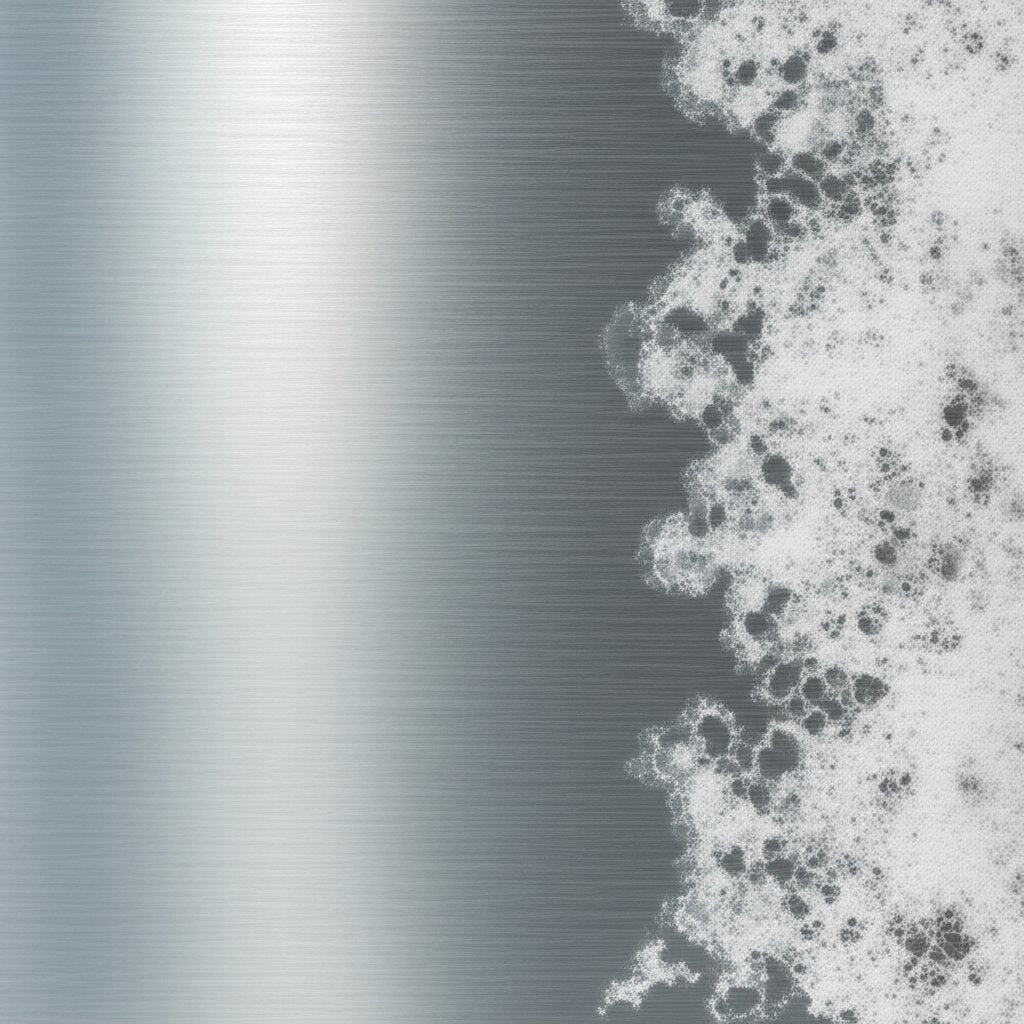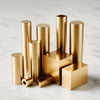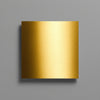Can Aluminium Rust Or Just Oxidize? How The Film Protects

Can aluminium rust?
Short answer: can aluminium rust?
Wondering if your aluminum patio furniture or window frames will end up with that familiar flaky orange coating? The short answer is: aluminum does not rust in the way iron or steel does. Instead, it can corrode—but the process and appearance are very different.
Core takeaway: Aluminum will not rust like steel, but it can corrode under certain conditions. The difference lies in the chemistry—rust is iron oxide, while aluminum forms a protective oxide layer that usually prevents deeper damage.
Scope at a glance: when does aluminum corrode?
- Marine environments (saltwater or salty air)
- Contact with other metals (especially stainless steel or carbon steel) in the presence of moisture—called galvanic corrosion
- Crevices, joints, or overlaps where moisture stays trapped and oxygen is limited
- Exposure to chlorides (like road salt or seawater spray)
- Highly acidic or basic (high or low pH) environments
- Stray direct currents (from electrical systems or rail infrastructure)
Rust versus corrosion explained
It’s easy to confuse the two terms, but let’s clarify:
- Rust is a specific type of corrosion that only happens to iron and its alloys (like steel). It produces reddish-brown iron oxide flakes.
- Aluminum corrosion is different. When exposed to air, aluminum instantly forms a thin, hard layer of aluminum oxide. This layer acts as a shield, protecting the metal beneath from further attack. In most environments, this means aluminum stays looking good and strong for years.
- However, in certain aggressive settings, or if the protective film is damaged, aluminum can develop other corrosion products—like white, powdery aluminum hydroxide—especially in the presence of chlorides or trapped moisture.
-
Corrosion triggers to watch:
- Direct contact with stainless steel or carbon steel in moist conditions
- Stagnant water in joints, seams, or overlaps
- Road salt, deicing chemicals, or seawater exposure
- Industrial pollution (acidic or alkaline fallout)
- Poor drainage or design details that trap water
How will you know if you have aluminium rusty problems? Look for signs like:
- Dulling or whitening of the surface
- Powdery white bloom (aluminum hydroxide)
- Pitting—small, scattered holes or craters
- Blistering or bubbling under paint or coatings
Key insight: Aluminum resists uniform corrosion thanks to a self-healing oxide, but localized attack can be rapid once that oxide is compromised in crevices, chloride-rich films, or galvanic couples.
So, while you’ll never see true aluminum rust or rusty aluminium in the classic sense, you can see material degradation if the conditions are right. Knowing where and why this happens helps you prevent it—and spot trouble early.
For more on the science behind these reactions and how to protect your aluminum, keep reading the chapters ahead.

Understanding the passive oxide layer on aluminum
How the aluminum oxide layer forms
Ever wondered why you rarely see oxidized aluminum flaking away like rusty iron? The answer lies in the unique way aluminum reacts with air and water. As soon as fresh aluminum is exposed—even for just moments—it reacts instantly with oxygen, forming a thin, invisible film of aluminum oxide (Al2O3). This process is so fast and effective that, for most people, the metal never appears bare at all. The oxide layer is made up of two parts: a compact, nearly pore-free barrier that hugs the metal, and a more porous, hydrated outer layer. Together, they act as a shield, drastically slowing further reaction and making aluminum naturally corrosion resistant. This is why, when you ask "does aluminum oxidize," the answer is yes—but in a way that actually protects the metal rather than destroys it.
- Immediate formation: The oxide film forms within seconds of exposure to air or water.
- Self-limiting thickness: The layer typically grows to just a few nanometers thick, then stops.
- Barrier and hydration: The inner layer is dense and protective; the outer is more porous and can absorb moisture.
- Adherent and stable: The film clings tightly to the surface and doesn’t flake off like rust.
In clean, neutral environments (think indoor architectural uses), this protective skin reforms almost instantly if scratched. That’s why aluminium tarnish usually looks like a subtle dulling or a soft gray sheen, not dramatic damage.
Self-healing behavior and its limits
Here’s where aluminum’s reputation really shines. If the oxide layer is damaged—say, by a scratch or abrasion—it generally heals itself as long as oxygen is available. This self-repair is what makes aluminum so useful for everything from window frames to marine parts. But while the oxide is tough, it’s not invincible. Certain conditions can break down this passivity:
- Chlorides (like salt): Concentrate in thin water films or crevices and attack the oxide, leading to pitting.
- Extreme pH: Highly acidic (pH below 4) or basic (pH above 9) environments dissolve the oxide film.
- Fluorides, strong acids, and bases: These chemicals can rapidly strip the protective layer.
- Trapped moisture: In joints or overlaps, water can block oxygen, preventing the oxide from reforming.
- Mechanical wear: Repeated rubbing or fretting can keep the oxide from healing.
So, while you may notice only minor oxidation on aluminium in most cases, aggressive environments can cause the protection to fail—and that’s when real corrosion sets in.
Recognizing the difference: Cosmetic vs. damaging oxidation
How do you know if you’re looking at harmless aluminium tarnish or something more serious? Cosmetic oxidation usually appears as a uniform, matte gray surface or a faint white powder (aluminum hydroxide). These changes are mostly aesthetic and don’t weaken the metal. However, when the protective film breaks down—especially in the presence of salt or trapped water—you’ll see localized white powder, pitting, or even underfilm blistering. That’s a sign the oxide can’t keep up, and the underlying metal is at risk.
Key insight: Aluminum’s oxide protects by passivation, but chloride-laden moisture and crevices create micro-environments where the film cannot reform fast enough.
- Is aluminum oxidation harmful? In most cases, it’s not. The oxide layer is what keeps aluminum from corroding aggressively. But if you see pitting, white powdery spots, or corrosion near joints, it’s time to take action.
Sidebar: What about anodizing?
Did you know? Anodizing is a process that deliberately thickens the natural oxide layer on aluminum. This creates a tougher, more uniform, and often colored finish. Sealing after anodizing is crucial—it locks in the protective layer and keeps out contaminants that could break down the oxide over time.
In summary, when you ask "does aluminum oxidize" or "does aluminum tarnish," the answer is yes—but this natural reaction is what makes aluminum so durable. Only when the environment overwhelms the oxide’s self-healing ability do you need to worry about deeper corrosion. Next, we’ll look at the specific mechanisms that attack aluminum and how to spot them in the real world.
Mechanisms that corrode aluminum and how to spot them
Recognizing pitting and crevice attack
When you notice small holes or white spots on your aluminum parts, you might wonder: what causes aluminum corrosion? It’s often a mix of environment and design. The most common types of aluminum corrosion are pitting and crevice corrosion. Pitting is triggered by chlorides—think salt spray or deicing chemicals. These aggressive ions break down the passive oxide layer, creating pinhole pits that may look minor but can deepen over time. Crevice corrosion, meanwhile, occurs in tight spaces—like under gaskets, lap joints, or fasteners—where stagnant moisture and limited oxygen prevent the oxide film from healing. You’ll often spot dull, powdery white deposits or concentrated pitting in these areas.
Galvanic corrosion in mixed metal joints
Ever wondered how does aluminum corrode faster when touching another metal? That’s galvanic corrosion in action. When aluminum is in electrical contact with a more noble metal—like stainless steel or copper—in the presence of a conductive liquid (such as rainwater or seawater), a tiny battery forms. Electrons flow from the aluminum (the less noble metal), causing it to corrode much more rapidly than it would alone. This is a leading cause of aluminium galvanic corrosion in marine and construction settings. You’ll typically see corrosion concentrated at the joint, often with white corrosion products and underfilm blistering.
Intergranular and filiform pathways
Not all corrosion on aluminum is visible on the surface. Intergranular corrosion attacks along the grain boundaries inside the metal, often starting as a pit and spreading unseen—especially in certain alloys and tempers. This can lead to loss of strength or even cracking. Filiform corrosion, on the other hand, creeps under paint or coatings in humid, chloride-rich environments. It appears as thread-like tracks or blisters, often starting at scratches or damaged paint. Both types can be subtle but damaging over time.
Other corrosion mechanisms: uniform, stray-current, and more
Uniform (general) corrosion is rare for aluminum but can occur in highly acidic or basic environments, where the protective oxide layer dissolves. Stray-current corrosion happens when unintended direct current (DC) flows through aluminum—often from nearby electrical systems or poorly grounded equipment. This causes rapid, localized metal loss, usually near bonds, cable routes, or where the current exits the metal. If you spot sharp-edged etching or unexpected pits in these spots, stray current may be to blame.
| Mechanism | Typical Triggers | What does aluminum corrosion look like? | Action (At a Glance) | Relative Risk |
|---|---|---|---|---|
| Pitting | Chlorides (salt, deicers), stagnant moisture | Small, round pits; white powdery deposits | Rinse, choose resistant alloys, apply coatings | High (marine, urban, road salt) |
| Crevice | Joints, gaskets, overlaps, trapped water | Localized pitting, powder in seams | Seal joints, design for drainage | Medium–High (wet, complex assemblies) |
| Galvanic | Contact with dissimilar metals in electrolyte | Corrosion at joints, underfilm blistering | Isolate metals, use compatible fasteners | High (mixed-metal assemblies, saltwater) |
| Intergranular | Susceptible alloys, improper temper, pollutants | Subsurface attack, cracking, delamination | Specify correct alloy/temper, avoid pollution | Variable (depends on alloy) |
| Filiform | Damaged coatings, humidity, chlorides | Thread-like tracks, blisters under paint | Repair coatings, control humidity | Medium (coated, painted surfaces) |
| Uniform | Extreme pH, strong acids/bases | Even dulling, loss of thickness | Avoid harsh chemicals, maintain neutral pH | Low (unless exposed to chemicals) |
| Stray-current | Nearby DC electrical systems, poor bonding | Sharp-edged pits, localized etching | Check electrical systems, ensure bonding/insulation | Medium (industrial, transit settings) |
Actions to prevent corrosion in aluminium
- Break up crevices and seal joints to keep water out.
- Design for proper drainage and ventilation.
- Isolate dissimilar metals with gaskets, bushings, or coatings.
- Specify alloys and tempers with proven resistance for your environment.
- Regularly inspect for early signs—especially in high-risk areas.
- Ensure electrical systems are properly bonded and insulated to prevent stray-current attack.
Key insight: While aluminum resists most uniform corrosion, local breakdown of the oxide layer—by chlorides, crevices, galvanic couples, or stray currents—can cause rapid, focused damage. Spotting and addressing these triggers is the key to long-term durability.
Understanding what corrodes aluminum and recognizing the early signs are essential for preventing costly failures. Now that you know what corrosion in aluminium looks like and how it starts, the next section will show you how different environments affect corrosion risk—and what you can do to protect your investment.

What to Expect by Environment and How to Protect Aluminum
How Environment Shapes Aluminum Corrosion Risk
When you ask, “does aluminum rust in water?” or “will aluminum rust outside in harsh climates?” the answer depends on the environment and how well the metal is protected. While aluminum won’t rust like iron, it can corrode—and the triggers and solutions vary by setting. Let’s break down what you can expect in different environments and the best ways to ensure lasting aluminum corrosion protection.
| Environment | What to Expect | Priority Protections |
|---|---|---|
|
Marine & Deicing Salt (Seawater, coastal air, road salt) |
|
|
|
Industrial Atmospheres (Factories, polluted cities) |
|
|
|
Freshwater Exposure (Rain, rivers, lakes) |
|
|
|
Soil Contact (Direct burial, foundations) |
|
|
|
Hot, Humid Climates (Tropics, greenhouses) |
|
|
Checklist: Smart Protection by Setting
- Marine/Deicing Salt: Anodize, coat, seal joints, rinse regularly, isolate metals.
- Industrial: Acid-resistant coatings, frequent cleaning, inspect for fallout.
- Freshwater: Design for drainage, clean surfaces, use coatings if needed.
- Soil Contact: Avoid direct burial, use cathodic protection, isolate from stray currents.
- Hot/Humid: Prep and seal surfaces, check for underfilm corrosion, maintain coatings.
Key insight: Aluminum’s natural oxide film gives excellent protection in most settings, but aggressive environments—especially where water, salt, or pollutants accumulate—demand extra measures like anodizing, robust coatings, and smart design for drainage and isolation.
So, can aluminum rust in water or does aluminum rust outside? Not in the way iron does, but without the right aluminium corrosion protection or aluminium protective coating, even corrosion-resistant aluminum can suffer in tough conditions. By matching your protection strategy to the environment, you’ll keep your aluminum strong and looking good for years to come.
Next, we’ll look at how mixed-metal joints—especially those involving stainless steel—can impact corrosion, and what you can do to prevent problems at the source.
Managing Stainless Steel and Aluminum Reactions in Mixed-Metal Joints
Why Stainless and Aluminum React: The Galvanic Corrosion Dilemma
Ever wondered, “Does stainless steel react with aluminum?" or “Will stainless steel react with aluminum in my project?” The answer is yes—especially in the presence of moisture or saltwater. This reaction is called galvanic corrosion, and it’s a leading culprit behind unexpected failures in mixed-metal assemblies.
Here’s what’s happening behind the scenes: when aluminum and stainless steel come into electrical contact and are wetted by an electrolyte (like rain, condensation, or salt spray), a tiny battery forms. Aluminum, being less noble, acts as the anode and corrodes preferentially, while stainless steel acts as the cathode and remains protected. This process, known as stainless steel to aluminum corrosion, is especially aggressive in marine or coastal environments where salt accelerates the reaction.
Fastener and Joint Design That Avoids Attack
Sounds complex? Imagine using stainless steel bolts to fasten an aluminum frame. If water gets in, the aluminum around each bolt can pit rapidly, leading to joint loosening or even structural failure. But with smart design, you can keep stainless steel aluminum reaction at bay.
- Do electrically isolate the metals using non-conductive washers, gaskets, or sleeves (rubber, plastic, or specialized isolators).
- Do use compatible or coated fasteners—anodized aluminum or coated stainless steel can help reduce direct contact.
- Do maximize aluminum area relative to the stainless steel fastener area. Large aluminum surfaces with small stainless fasteners are less risky than the reverse.
- Do apply sealants in fastener threads and under heads to block moisture ingress.
- Do ensure free drainage and ventilation so water can't pool around joints.
- Don’t use carbon-steel tools or debris—they can seed corrosion and defeat your isolation efforts.
- Don’t ignore regular maintenance—rinse salt off exposed assemblies, especially in coastal settings.
Isolation and Drainage Best Practices
It’s not just about the metals you choose, but how you put them together. Here’s a practical comparison to help you design longer-lasting joints:
| Pairing | Risk in Saltwater | Isolation Method |
|---|---|---|
| Stainless steel bolt in large aluminum plate | Low–Medium (if area ratio is high) | Non-conductive washer/gasket, sealant, anodize aluminum |
| Aluminum fastener in large stainless steel structure | High | Not recommended; use stainless fastener or sacrificial anode |
| Aluminum and stainless in direct contact, exposed to salt spray | High | Coatings on both metals, full electrical isolation, regular rinsing |
| Stainless steel and aluminum, well isolated and drained | Low | Rubber/plastic isolators, sloped surfaces, drain holes |
In galvanic couples, protect the less noble metal—aluminum—by isolation, coatings, and smart geometry.
Real-World Tips for Minimizing Stainless Steel and Aluminum Corrosion
- Choose stainless grades with better crevice corrosion resistance if marine exposure is unavoidable.
- Always specify and inspect for proper installation of isolators and sealants—missing a single washer can compromise the whole joint.
- Design assemblies so water drains away from joints, and avoid horizontal surfaces where puddles can form.
- Consider sacrificial anodes for critical marine structures.
- Schedule regular rinse-downs in salt-prone environments to prevent buildup.
By understanding why stainless steel aluminum corrosion happens and following these practical steps, you’ll dramatically extend the life of your aluminum assemblies—even when they must work side-by-side with stainless steel. Next, we’ll explore how to inspect and test for corrosion so you can catch problems early and keep your projects performing as intended.
Inspection and Testing to Validate Aluminum Corrosion Performance
What Aluminum Corrosion Looks Like in the Real World
Ever spotted a dull patch or strange white dust on an aluminum part and wondered, "How does aluminium corrode, and what is aluminum corrosion supposed to look like?" Unlike the familiar red-brown flakes of rust on steel, corroded aluminum rarely peels or flakes. Instead, you’ll notice:
- Chalky white bloom: A powdery or dusty deposit, often aluminum hydroxide, signaling localized attack.
- Pinholes or pits: Tiny, sometimes deep, cavities with possible dark centers—classic signs of pitting corrosion.
- Underfilm blistering: Bubbles or raised spots under paint or coatings, often with white or gray corrosion products underneath.
- Edge creep: Corrosion advancing from cut edges, seams, or fastener holes, especially where moisture gets trapped.
- Thread-like filaments: Irregular, worm-like lines beneath coatings, indicating filiform corrosion.
These clues help you recognize what causes corrosion of aluminum and catch issues before they threaten performance or safety. If you see any of these symptoms, it’s time to dig deeper.
How Aluminum Corrosion Performance Is Tested
So, how do professionals validate whether aluminum will hold up in tough conditions? Testing for corrosion in aluminium combines hands-on inspection with lab-based simulations and advanced diagnostics:
- Salt Spray Testing (ASTM B117, ISO 9227): Panels or components are exposed to a saltwater mist for days or weeks. The time until the first defect appears, pit density, and how far corrosion creeps from a scratch are key metrics. This test compresses years of chloride exposure into a short window and is a rapid way to compare coatings or alloys (Auto Technology).
- Cyclic Corrosion Testing (ASTM G85, ISO 11997-1): Alternates between salt spray, humidity, drying, and temperature changes to mimic real-world outdoor cycles. This method better predicts actual service life, especially for marine or industrial applications.
- Electrochemical Techniques: Potentiodynamic scans and other lab tests measure how quickly aluminum alloys or coatings corrode in different solutions. These are often used for research or ranking materials.
- Non-Destructive Testing (NDT): Eddy current testing, ultrasonic thickness gauging, and digital radiography can detect thinning, pitting, or hidden corrosion under insulation or coatings (Voliro).
- Field Checks: Simple pH and conductivity tests of surface deposits can indicate if conditions are corrosive. High conductivity or low/high pH suggests aggressive environments.
Routine inspections should be more frequent in high-risk settings—like marine, coastal, or industrial environments—where what causes aluminum to corrode is more likely to occur. For less aggressive locations, annual or biannual checks may be enough.
When to Act and What to Record
Not sure when to intervene? Here’s a practical inspection sequence to keep your aluminum assets in top shape:
- Visual scan: Look for chalky bloom, pits, blisters, or edge creep—especially around joints, fasteners, and overlaps.
- Probe suspicious areas: Gently scrape white deposits to check for underlying pits or metal loss.
- Test coatings: Tap or gently flex painted surfaces to spot hidden underfilm corrosion.
- Check for new interfaces: Pay attention to recent repairs, fastener swaps, or added dissimilar metals.
- Electrical system review: Inspect for stray DC currents, verify bonding and insulation, and check for unintended current paths—especially near railways or industrial equipment.
- Document everything: Record the location, exposure conditions, materials involved, and take photos before and after any cleaning or repairs.
- Schedule follow-up: Set reminders for routine re-inspection based on environment and service history.
-
Acceptance cues:
- No visible pits, blisters, or chalky bloom after cleaning.
- Protective coatings are intact, with no underfilm lifting.
- No signs of edge creep or corrosion at fasteners.
- Electrical bonding and isolation are verified and undamaged.
Key insight: Early, regular inspection—paired with smart documentation and targeted testing—lets you spot what causes aluminum to corrode before it becomes a structural or cosmetic problem.
For best practices and up-to-date guidance, consult resources from the Aluminum Association or the Association for Materials Protection and Performance (AMPP). These organizations set the standards for how to inspect, test, and document corrosion in aluminium across industries.
With these actionable steps, you’ll be able to recognize and address what causes corrosion of aluminum—and keep your assets looking and performing their best. Next, we’ll cover field maintenance and repair strategies that actually work, so you can tackle corroded aluminum with confidence.

Field Maintenance and Repair That Actually Works
Surface Prep and Safe Cleaning
When you spot dull patches, white powder, or pitting on your aluminum—whether it’s a window frame, boat part, or kitchen rack—it’s time to act. Effective aluminum corrosion removal is less about fancy chemicals and more about careful, stepwise cleaning. Here’s a practical guide anyone can follow to restore aluminum rust proof performance and appearance.
- Inspect and mask: Check the affected area. Mask off any nearby materials (like glass, rubber, or painted surfaces) to protect them from cleaners or abrasives.
- Wash with pH-appropriate detergent: Use warm water and mild dish soap, or a commercial aluminum cleaner. A soft cloth or sponge works best. Avoid harsh or abrasive pads unless absolutely necessary.
- Deoxidize or brighten: For light oxidation or aluminium tarnish, apply a solution of equal parts white vinegar or lemon juice and water. Gently rub with a soft cloth. For tougher spots, a paste of baking soda and water can help. Rinse thoroughly with clean water.
- Mechanical abrasion (if needed): For stubborn, corroded aluminum or water-stain corrosion, use non-ferrous abrasives (like a nylon pad or fine-grit sandpaper). Scrub gently, always moving with the grain to avoid scratches. Never use carbon-steel brushes, as they can embed iron and trigger future corrosion.
- Neutralize residues: If you used acidic or alkaline cleaners, follow up with a neutralizing rinse—such as a damp cloth with water and a little baking soda after using acid, or a mild vinegar rinse after using alkaline solutions. This prevents chemistry from lingering and harming the metal.
Neutralizing and Passivation
Once the surface is clean and dry, it’s time to protect it. This step is crucial for long-term aluminium rust proof results.
- Apply conversion coating or primer: Use a conversion coating (such as a chromate or non-chromate primer) specifically designed for aluminum. This promotes adhesion and helps the natural oxide layer heal and thicken.
Re-Coating or Anodizing Repair
- Recoat or anodize: For painted or coated aluminum, apply a compatible topcoat, making sure to seal all edges, seams, and fastener heads. For previously anodized parts, consider touch-up with a seal-compatible system, or re-anodize if the damage is extensive. Allow all coatings to cure fully before handling or reassembly.
- Reassemble with isolation and sealing: When reinstalling, use isolation hardware (plastic or rubber washers, gaskets) and sealants to prevent future crevice corrosion or galvanic attack.
Spot Repair vs. Strip-and-Recoat: Making the Right Call
Not sure if a quick fix is enough? Here’s a simple decision guide:
- Spot repair is usually fine if the coating is mostly intact, pits are shallow, and the part isn’t in a critical structural role.
- Strip-and-recoat is needed if coatings are peeling, pitting is deep, or the item sees heavy exposure (like marine or industrial service).
- When in doubt, consult the manufacturer’s recommendations or a professional specializing in corrosion removal on aluminum.
Disposal, Safety, and "Do Not" List
- Dispose of used cleaners, abrasive dust, and rinse water according to local environmental regulations.
- Wear gloves and eye protection when using chemicals or abrasives.
-
Do not:
- Use chlorine bleach—it can pit and discolor aluminum.
- Use carbon-steel tools or brushes—they introduce iron, leading to galvanic corrosion.
- Leave cleaner residues—always rinse thoroughly.
- Skip masking—protect adjacent materials from accidental damage.
Key insight: Gentle, stepwise cleaning—paired with the right coatings and isolation—restores aluminium rust proof performance and prevents future corrosion. Avoid shortcuts and always match your repair method to the severity of the damage.
With these steps, cleaning corroded aluminum and achieving long-lasting, aluminum rust proof results is within reach—even for non-specialists. For persistent or severe cases, or when you need to remove corrosion from aluminum in critical applications, professional help or full recoating may be the safest bet. Up next, we’ll explore how smart alloy selection and design details can prevent corrosion traps from forming in the first place.
Alloy Selection and Design Details
Choosing the Right Aluminum Alloys for Corrosion Resistance
When you’re planning a project, you might wonder: Is aluminum corrosion resistant enough for my environment? The answer depends on your alloy choice. Not all aluminum grades perform the same—some are built for harsh conditions, while others need extra care. Here’s a quick comparison to help you pick the right material for lasting performance.
| Alloy Series | Corrosion Resistance | Typical Uses | Marine Suitability / Notes |
|---|---|---|---|
| 5xxx (e.g., 5052, 5083) | Excellent (very high aluminium corrosion resistance) |
Marine hardware, boat hulls, chemical tanks, architectural panels | Top choice for seawater; resists pitting and stress corrosion |
| 6xxx (e.g., 6061, 6082) | Very good (corrosion resistant aluminum for most uses) |
Structural frames, automotive parts, pipelines, furniture | Good for outdoor use; anodizes well; suitable for moderate marine exposure with coating |
| 7xxx (e.g., 7075) | Moderate to low (lower aluminum alloy corrosion resistance) |
Aerospace, high-stress parts, sports equipment | Not recommended for marine or corrosive environments; susceptible to stress-corrosion cracking |
| Cast grades (e.g., AlSi10Mg) | Good (variable, depends on silicon/magnesium content) |
Complex shapes, 3D printed or die-cast parts | Generally good, but check specific alloy specs for marine service |
- Pro tip: For the best corrosion resistance of aluminum alloys in tough settings, stick with 5xxx or properly coated 6xxx series. Avoid copper-rich 2xxx and high-zinc 7xxx for wet or salty environments unless you’re prepared for extra protection.
Design Details That Prevent Corrosion Traps
Even the most corrosion resistant aluminium can fail if the design creates water traps or encourages galvanic attack. Imagine a beautifully machined aluminum bracket—if it has tight crevices, sharp corners, or is paired with stainless steel fasteners without isolation, you risk localized corrosion.
- Include drainage and vent holes to prevent water pooling.
- Use generous radii instead of sharp corners to minimize stress and coating failures.
- Seal lap joints and overlaps to keep out moisture.
- Isolate aluminum from other metals with bushings, washers, or coatings—especially in marine or industrial settings.
- Specify surface finishes that pair well with your chosen aluminium protective coating or anodizing.
Before you send your design for manufacturing, make sure to:
- Request documentation for alloy and temper—this ensures you get the right grade for aluminium alloy corrosion resistance.
- Set surface roughness targets before coating or anodizing.
- List coating or anodizing specs, including sealing requirements, in your procurement documents.
When to Involve a Precision CNC Machining Partner
Sounds complex? Imagine you’re designing a custom enclosure for electronics or a marine bracket with tight tolerances. Getting the details right—like precise chamfers for drainage, stack-up allowances for coatings, or isolation inserts—often requires more than just a standard machine shop.
| Provider | Capabilities | Lead Time | Quality Systems |
|---|---|---|---|
| XTJ CNC Machining Services | 4 & 5-axis machining, high-complexity parts, all aluminum grades, design-for-corrosion features | From 3 days | ISO 9001, IATF 16949 |
| Other certified CNC shops | Varies (check for experience with corrosion resistant aluminum) | Typically 1–3 weeks | Should have ISO or equivalent |
Involving a precision CNC Machining Services early means you can:
- Integrate corrosion-aware features like isolation inserts, proper chamfers, and surface prep for coatings.
- Ensure your design meets tight tolerances without sacrificing aluminium corrosion resistance.
- Get documentation and traceability on alloys, finishes, and quality checks—crucial for critical or regulated projects.
Key insight: The best way to guarantee corrosion resistant aluminium is to combine smart alloy selection, thoughtful design, and expert machining. Early collaboration with a qualified CNC partner ensures your parts are built to last—wherever they’re used.
If you’re serious about maximizing the corrosion resistance of aluminum alloys, don’t wait until after the fact. Bring your machining partner into the conversation early, specify your needs in detail, and always verify that your chosen shop understands both the science and the practical demands of corrosion prevention. This way, you’ll get parts that not only fit perfectly but also stand up to the toughest environments for years to come.
Frequently Asked Questions About Aluminum Rust and Corrosion
1. Can aluminum rust like steel or iron?
No, aluminum cannot rust in the traditional sense because rust refers specifically to iron oxide. Instead, aluminum forms a thin, protective oxide layer that prevents deep corrosion. However, under certain conditions such as exposure to saltwater or contact with dissimilar metals, aluminum can experience other types of corrosion.
2. What causes aluminum to corrode?
Aluminum corrodes when its protective oxide layer is compromised by factors like chlorides (from salt or deicing chemicals), trapped moisture, contact with other metals (especially in the presence of an electrolyte), acidic or basic environments, or stray electrical currents. These triggers can lead to pitting, crevice, or galvanic corrosion.
3. How can I prevent aluminum corrosion outdoors?
To prevent corrosion, choose corrosion-resistant aluminum alloys, apply protective coatings or anodizing, design for proper drainage, and isolate aluminum from dissimilar metals using gaskets or bushings. Regular cleaning and inspection are also recommended, especially in marine, industrial, or high-salt environments.
4. Is aluminum corrosion dangerous or just cosmetic?
Most aluminum corrosion is cosmetic, appearing as a dull gray surface or white powdery bloom. However, if left unchecked, localized corrosion like pitting or crevice attack can weaken the metal and affect structural integrity, especially in critical applications or harsh environments.
5. What should I do if I find corroded aluminum?
Clean the affected area with pH-appropriate detergents and non-ferrous abrasives, neutralize any residues, and apply a suitable primer or conversion coating. For severe cases, consider recoating or re-anodizing, and always use isolation hardware when reassembling with other metals to prevent future corrosion.
-
Posted in
aluminium protection, aluminum corrosion, aluminum maintenance, does aluminum rust, galvanic corrosion





